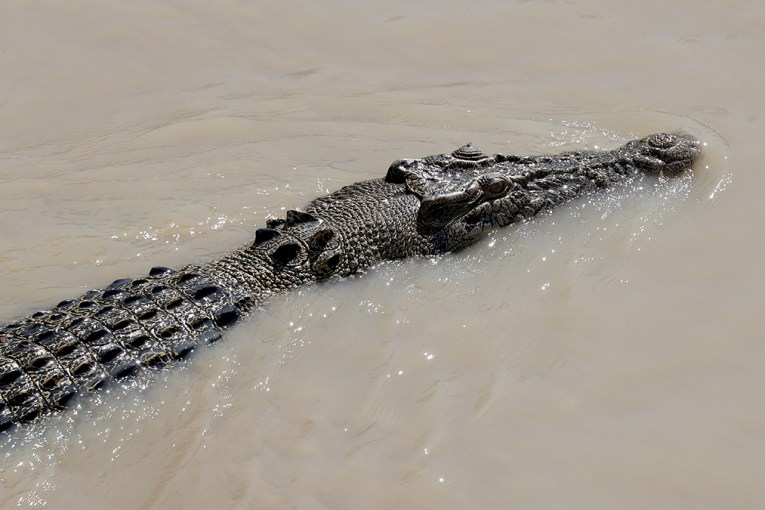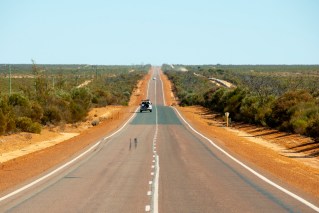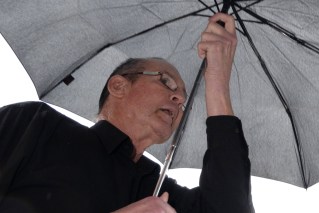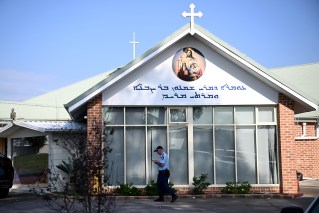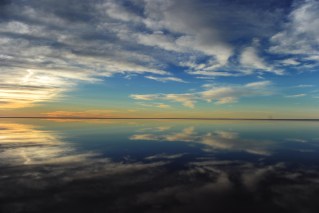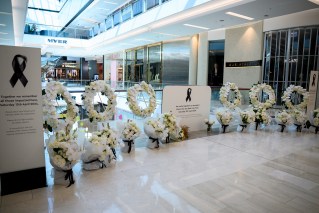Black summer bushfire royal commission delivers final report

The royal commission has handed down its 1,000 page report with 80 recommendations. Photo: AAP/Dan Himbrechts
The introduction of a national state of emergency, an all-hazard emergency warning app and a national fleet of water bombers are among the recommendations in the bushfire royal commission’s final report.
The inquiry was called in the wake of the devastating 2019-20 summer bushfire season, but looked at Australia’s readiness for and response to all natural disasters.
The 80 recommendations provide advice on the coordination of all levels of government during emergencies, warning systems for the public, firefighting resources, climate data, the role of the Australian Defence Force and how charities and other groups can best respond in the wake of disasters.
Minister for Emergency Management David Littleproud said the Government would “carefully and methodically” consider the report and its recommendations.
The Royal Commission into National Natural Disaster Arrangements tasked the commissioners with an immense job: working out not only how to prevent the severity of future bushfire seasons, but all natural disasters.
Here are ten of the key takeaways.
Key recommendations:
- National State of Emergency
- Air quality monitor
- Climate change
- Fire rating system
- Hazard reduction burns
- Aerial firefighting resources
- Emergency warning app
- Better communications
- Charity reforms
- Advice on where we live
National state of emergency
The royal commission is recommending the Federal Government create a law allowing it to declare “a state of national emergency”.
Critically, it says the new law should give the Government powers to take action even if states and territories don’t specifically ask for help, but only in “clearly defined and limited circumstances”.
Speaking after the report was released, Mr Littleproud said it would involve a clear “trigger point” for the Government and would allow it to mobilise national agencies to begin to respond across the country.
“That doesn’t mean the Federal Government would come in and take the operational management of the fire over,” he said.
The commission says having the national state of emergency would make it clear to the public how serious the disaster was.
Air quality monitor

he commission heard the bushfire smoke impacted 80 per cent of the population. Photo: AAP/ Lukas Coch
During the hearings the commission heard smoke from the summer’s blazes killed an estimated 445 people and there was confusion around when it was safe to go outside.
It is now recommending a nationally consistent guide on air quality that’s updated in real-time so everyone is on the same page about what is, and isn’t, a dangerous level of smoke pollution.
The commission also wants greater community education and guidance on the dangers of smoke, and targeted advice to vulnerable groups.
In a separate recommendation it is calling for the development of national forecasting abilities on smoke and other pollutants like dust and pollen, “to predict plume behaviour” and issue advice accordingly.
Climate change
In its report, the commission does not shy away from acknowledging the repeated expert evidence that climate change is, and will continue, to increase the frequency and intensity of natural disasters
It flags that there is a “patchwork” of climate datasets across Australia and says the states and territories need to work together to fix that by creating a national data system where information, analysis and knowledge can be shared easily.
The commission also recommends all governments produce “downscaled climate projections” for decision makers and agencies to use to help plan their future responses to disasters.
Fire danger rating system
As part of its advice on emergency information and warnings, the commission recommended state and territory governments “expedite” the rollout of a new fire danger rating system.
It said the visual display of the warning system and the actions that the public needed to take in response to each level needed to be nationally consistent.
It also said governments should invest in a nationwide education program once the new system is released.
At the moment, the ratings are different across the country, meaning the highest rating in one jurisdiction may not correspond to the highest in another.

The report recommends a nationally consistent rating system. Photo: ABC South East NSW/Adriane Reardon
Hazard reduction burns
After the summer fires there was considerable discussion about whether enough hazard reduction burns had been carried out before the season, and whether they were effective.
The commission recommends all levels of government should review the assessment and approval processes for hazard reductions – whether prescribed burns, or mechanical slashing to clear land.
It says governments need to make clear what a land holder’s responsibilities are, and cut down the time it takes for people to obtain approvals for hazard reductions.
But it also heard that “in extreme bushfires, fuel loads do not appear to have a material impact on fire behaviour”.
The commission is also encouraging governments to engage further with traditional owners to learn more about the relationship between Indigenous land and fire management and natural disaster resilience, and how it can help in the future.
More water bombers

The demands on aerial firefighting equipment last bushfire season were unprecedented. Photo: AAP/ Lukas Coch
In the lead-up to the last bushfire season the Government was under pressure to fund extra air support for fighting bushfires, but argued its budget was too stretched.
The commission recommends the creation of a national aerial firefighting fleet “to be tasked according to greatest national need”.
At the moment states own specific firefighting planes and lend them to other jurisdictions when in need, but the states and territories also rely on being able to borrow extra large air tankers from other countries.
The number of bushfires burning at the same time last season put unprecedented pressure on water-bombing aircraft, prompting the call for a permanent investment in more resources.
The commission’s report says the national fleet should include a very large or large air tanker, helicopter capability, and extra pilots and support staff.
Emergency warning app
The commission is also calling for state and territory governments to roll out an “all-hazard Australian warning system”.
It suggested all levels of government should “explore the feasibility” of a national app so information on the warning system could be readily available.
It also wants the Federal Government to work with state and territory governments to develop minimum standards on what should be included on bushfire warning apps.
Better communications
One of the most consistent themes in the evidence given to the commission about experiences in the 2019-20 bushfires was how frustrating it was for people on the ground who could see their counterparts on the other side of the state border but couldn’t contact them.
As it says in the report “the fires did not respect state borders”.
In response to that evidence the commission is recommending states and territories either update their current strategies or develop a new one so that people have the technology to communicate across jurisdictions.
It also thinks there needs to be a national register that shows the number of emergency services personnel, equipment and aerial assets that can be drawn on or moved around if needed.
Charity reforms

The commission says governments need to educate the public about the challenges charities face. Photo: ABC/ Red Cross Australia
The commission’s first recommendation when it comes to charitable donations is that state and territory governments need to do more to make sure charities are getting what they need.
It says they need to educate people about the “challenges” charities face with the storage and distribution of donated goods.
Reforms to fundraising laws are also being recommended so that there is a “single national scheme” for how charitable fundraising is regulated.
The commission also wants smaller charity and volunteer organisations to be part of disaster recovery, saying the Federal Government should hold regular forums with those groups “with a view to continuous improvement or coordination of recovery support”.
Advice on where we live
While the commission didn’t go as far as saying people need to re-think where they live based on the likelihood of future disasters, it says people need to be told what the risk is before they buy or move somewhere.
It recommends state and territory governments should have a process in place to communicate that risk to households and prospective buyers.
The report also suggests governments “work together” with the Federal Government to explore the development of a national mechanism to do the same.
It’s not just governments that need to make the risk clear – the commission wants insurance companies to produce “clear guidance” on the the risk mitigation actions insurers will recognise when they set their insurance premiums.
